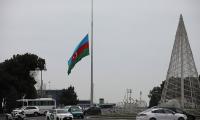The US-China competition, also referred to as US-China rivalry, carries multiple implications in its wake for the world. Meanwhile, Pakistan-China cooperation is embedded in decades of mutual trust.
Post 9/11, when the US and its allies were busy fighting wars, spending trillions, and killing millions, China quietly made inroads across continents centred on economic cooperation, that culminated with the launch of the Belt and Road Initiative (BRI) in 2015. The BRI now has about 150 partner countries, including Pakistan.
However, the US sees this development as a Chinese bid to challenge its global hegemony. Consequently, CPEC draws politico-diplomatic opposition from the US and its partners, and has also come under terrorist attacks by inimical forces bent on aggravating our security and economic woes. The US withdrawal from Afghanistan indicates a significant shift in its priorities that affects regional security dynamics including its relations with Pakistan. In this context, US President Joe Biden did not hesitate in naming Pakistan as “the most dangerous state”.
American and Chinese national security strategies reveal an enormous gap in their ends, ways and means. The US lays emphasis on ‘America first’ and ‘protecting the homeland’, whereas China focuses on ‘national rejuvenation’ and the ‘Chinese dream’. ‘Economic development, political stability, and social cohesion’ remain China’s priorities, while the US’s priority goes to ‘military strength, economic prosperity, and political leadership’. China emphasizes ‘non-interference’ and ‘win-win cooperation’, whereas the US underscores ‘peace through strength’ and ‘American exceptionalism’.
The US National Security Strategy 2022, states: “People’s Republic of China is the only competitor with both the intent to reshape the international order and, increasingly, the economic, diplomatic, military, and technological power to do it”. Nato also labels China as a “threat”. According to the New York Times report on the recent G7 Summit in Italy citing “28 references describing Beijing as a malign force” it says, “China joins the G7’s List of Adversaries”. From the US perspective, countries that have even economic ties with China cannot be its friends.
The rivalry has been exacerbated by the wars in Ukraine and the Middle East, and the showdown encompassing Iran. The Russian-North Korean cosying up and China’s newly passed law that “authorizes its coast guard to seize foreign ships that illegally enter China’s territorial waters and to detain foreign crews for up to 60 days”, could cause escalation in the prevalent tenuous environment.
These developments introduce a newer dimension to the brewing global strategic matrix, and ensuing Cold War 2.0, that is much different in character and impact from the original cold war. This vitiated milieu engenders an environment that restricts foreign policy flexibility for smaller states like Pakistan, and incentivizes some to join rival camps as strategic partners, like India has done. The geo-political antagonism also inhibits interstate and intra-regional economic cooperation, which could help many nations overcome their socio-economic difficulties.
According to the IMF, China’s economy, currently second largest, is poised to overtake the US by 2030. Avoiding confrontation, China is gradually becoming assertive. It has increased its defence expenditure from $65 billion to $178 billion within a decade with added focus on modernization of its blue water Navy and building new naval bases abroad. The Economist, in its cover story of June 15, 2024, termed China “the scientific superpower”, concluding that the “old science world order, dominated by America, Europe and Japan, is coming to an end”.
Owing to their extensive economic ties with China, there appear to be some wedges between the US and its partners on China-containment. In 2023, EU exports to China amounted to 224 billion euros. On December 30, 2020, the EU and China concluded in principle the negotiations on the “Comprehensive Agreement on Investment” (CAI).The EU and the Association of Southeast Asian Nations (ASEAN) have been dialogue partners since 1977. India disregards US sanctions on Russia and Iran.
Despite war, Russian gas continues to flow through Ukraine, for which Ukraine gets royalty as well. India buys Russian crude, refines and exports it. India also got a waiver to buy Russian weapons and have trade with Iran. This indicates US compromises in pursuit of its strategic interests, as well as its waning coercive influence. Interestingly post-Ukraine conflict, the US has replaced Russia as the largest LPG exporter to Europe. Indian relevance to the US as a ‘strategic partner’ and ‘net security provider’ is significantly influencing geo-strategic equation south Asia, creating conventional asymmetry that could result in lowering the nuclear threshold of Pakistan.
Grappling with issues of inner cohesion and dwindling economy, Pakistan can ill afford to cut off ties with any of the regional or extra regional countries. China and the US are Pakistan’s largest trading partners. Pakistan’s majority exports are to the US while its largest FDI and imports are from China. The US is still a preeminent military, technological and economical power having a greater sway over international politics.
To navigate this complex geopolitical landscape, safeguard its interests and emerge as an important player in the region, Pakistan should adopt a pragmatic, dynamic and flexible approach. Pakistan should never choose sides but manage all relationships ‘independent of the other’. The country must resolve disputes with the neighbours. International relations can be woven around commonality of interest in areas like countering violent extremism, anti-narcotics, joint efforts in offsetting impacts of climate degradation, collaboration in energy projects, trade and economic cooperation capitalising on Pakistan’s location as a regional hub of connectivity.
Focus on internal cohesion, stabilizing the economy, socio-economic development, industrialization, and technological advancement to reduce dependence on external powers is essential. Providing a business friendly environment and continuity of policies will help attract investments from home and abroad.
Pakistan must actively participate in regional and international forums to promote its own interests and build wide partnerships. The youth are a great capital as well as a challenge that has to be converted into an opportunity through education and grooming to become useful global citizens.
The writer is a former
diplomat, retired major
general and president of the
Islamabad Policy Research
Institute (IPRI).
MPAs ask for their salaries and benefits to be at par with high court judges and exempt from tax
This system fosters and places premium on VIPs, facilitating VIP culture, which is alive and kicking
Imagine this waste covering over 15,500 cricket stadiums, piled three meters deep every year
If there is one thing that can be gleaned from politics today, it is that we no longer speak same language
Postman argues that “typographic mind” was yielding to “televisual mind”
Pakistan is well poised to meet opportunities that Artificial Intelligence will offer for developments in industries







